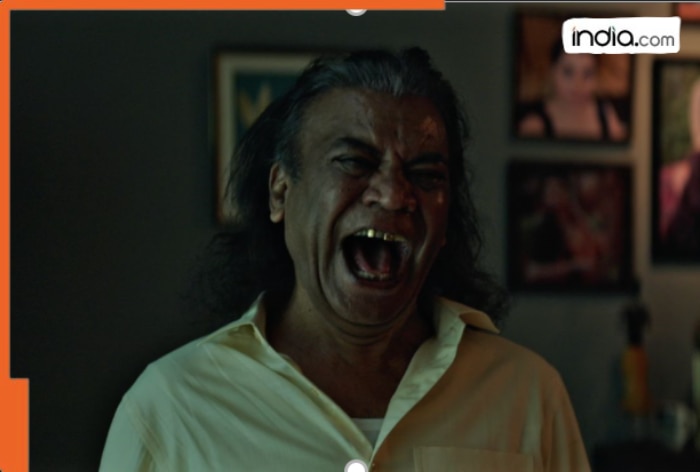I had witnessed high-speed chases and intense shootouts only in action movies until Saturday when my colleagues and I found ourselves in the middle of a harrowing, real-life experience while covering an anti-government protest in Abuja, Nigeria’s capital.
The initially calm situation on the protest ground began to take a frightening turn when suspected officials of the State Security Service (SSS) and police started firing tear gas and then live ammunition at peaceful protesters and journalists. It was a surreal and terrifying experience!
How it all began
I was among the four reporters deployed on Saturday by my organisation, PREMIUM TIMES, to the Moshood Abiola Stadium, Abuja, to cover the ongoing nationwide protests dubbed #EndbadgovernanceInNigeria or 10 Days of Rage in Abuja. However, my first coverage began on Friday, the second day of the demonstration.
On Saturday, I was among the first set of people to arrive on the premises of the stadium — the converging venue designated for the Abuja protesters — at about 8:45 a.m. While waiting for my other colleagues and the protesters to arrive, I parked my car (a black Toyota Corolla) on the opposite side of the road, about 200 metres adjacent to the stadium’s main entrance. Some well-kitted policemen were seen standing by the entrance to the stadium beside their armoured vehicles. Shortly after, several journalists representing other media outlets arrived.
At about 9:15 a.m., no protesters had arrived. The other journalists, with Cable, ICIR, AriseTV, Channels TV, News Central TV, and I were waiting. After a while, a handful of protesters started converging on the gate side.
The protesters came bearing different placards with arrays of demand slogans. At about 10:15 a.m., a deputy commissioner of police, FCT, who identified himself as Ishiyaku, came to address the journalists alongside other heavily armed officers. As the demonstrations continued, he told the journalists that they came to ensure peace and that no one was hurt.
However, shortly after he departed, at about 11:00 a.m., journalists began to interview some of the protesters.
“They have been asking us to go inside the stadium, but we are afraid because they want to kill us. They have been tear gassing us since Day 1,” said a female protester, who wore a white top and tight-fitted trousers.
Later on, the few protesters (less than 100 people) called themselves to order. They formed a circle, displaying their placards, as they took turns speaking through a green colour amplifier. It drizzled briefly, but the protesters continued as the rain droplets stopped.
At about 11:30 a.m., some policemen were seen crossing to the other side of the road, repositioning themselves. They soon started firing tear gas in the direction of the protesters. In their midst were some journalists conducting interviews.
Tear gas canisters rain down
The atmosphere suddenly became rowdy and tense. The peaceful protesters and journalists began to run for safety. The previously serene atmosphere suddenly became a battleground, the atmosphere turning cloudy as smoke from the tear gas filled the air.
“Kpa, Kpa, kpa, kpa!” were the scary gunfire sounds resonating from different directions. Tear gas canisters were raining down. Sooty smoke oozed out of each canister as it landed on the ground. As if that was not enough, several police officers ran after the fleeing crowd, harassing and assaulting some of the protesters they could get hold of.
I quickly hopped into my colleague Abdulqudus Ogundapo’s car, parked a few metres away from where the protesters had gathered. Other journalists from Cable hurriedly joined, and he drove off. He drove around the stadium premises back to the main entrance again in anticipation that the protesters would regroup. We were wrong.
All the protesters had disappeared. We saw the police officers harass a protester who knelt before one of the officers, as if begging for his life. Another of my PREMIUM TIMES colleagues, Ademola Popoola, an ICIR reporter, Mustapha, and an AriseTV cameraman were videoing the incident.
Displeased, the policemen ordered all the journalists to leave the area.
“Leave this place! Leave this place!”, one of the policemen ordered with anger.
At this point, all the journalists at the scene crossed the road to the opposite side of the stadium, where my car and other cars were parked.
By the boot of my car were journalists wearing faze caps branded AIT. My PREMIUM TIMES colleague Emmanuel Agbo was on my left, and to my right were two journalists from People’s Gazette. Also, parked in front of my car were cars carrying the AriseTV crew, the News Central, the ICIR journalists and others covering the protest.
Arrival of the hooded men
While we were all trying to recover from the tear gas, at about 12:15 p.m., more police vans arrived at the stadium. Shortly after, about seven Toyota Sienna vehicles (with no number plates) disgorged dozens of hooded and heavily armed SSS officers.
As soon as they alighted from their vehicles, the hooded men moved in different directions.
“Leave this place, leave this place,” one of them kept huffing, swinging his hand in anger while pointing his rifle toward journalists covering the protests.
He immediately began to load his rifle with shiny-edged bullets wrapped around his waist, and he started to shoot in the direction I stood with the other journalists carrying cameras on the opposite side of the stadium.
I could not immediately process what was happening. In a split second, I hurriedly opened the doors of my car. The journalists close to the door hopped in, trembling and screaming.
As the car roared to life, we saw the hooded SSS official stumble into the drainage by the roadside. Before he could regain balance to reload his gun to fire more shots, I drove off at speed, carrying six journalists who lay low in my car.
After I drove about 600 metres away from the scene, I stopped. Other journalists did, too. The aim was to see if we could capture the moment better. Little did we know that the SSS officials were still after us in their vehicle. As I was about to step out of the car to observe them, my colleagues shouted, “Move! Move!! They are coming.” Gripped with shock, as I stepped on the car accelerator, the sound of gunfire boomed behind us.
But in a moment, the bullets came close as I heard them hit the backside of my car. “My car has been shot,” I informed the journalists behind me. “I heard the sound, too,” replied one of them.
As I drove towards Independence Avenue, just before the road to the United Nations House in Abuja, I parked to confirm the shots. Bullet holes stared back at me.
“Three bullets have pierced the boot of the car,” I told the journalists in my car, and they screamed. “Please, let’s keep moving,” retorted one of them.

I quickly drove back to our office at Wuse Zone 2. As we arrived, we all thanked God for saving our lives. But I kept wondering who could have ordered the hooded men to shoot at journalists with clear identification marks.
At about 5:17 p.m., we drove back to the stadium; no protesters were there, but the security forces were still loitering on the premises.
Support PREMIUM TIMES’ journalism of integrity and credibility
At Premium Times, we firmly believe in the importance of high-quality journalism. Recognizing that not everyone can afford costly news subscriptions, we are dedicated to delivering meticulously researched, fact-checked news that remains freely accessible to all.
Whether you turn to Premium Times for daily updates, in-depth investigations into pressing national issues, or entertaining trending stories, we value your readership.
It’s essential to acknowledge that news production incurs expenses, and we take pride in never placing our stories behind a prohibitive paywall.
Would you consider supporting us with a modest contribution on a monthly basis to help maintain our commitment to free, accessible news?
Make Contribution
TEXT AD: Call Willie – +2348098788999









